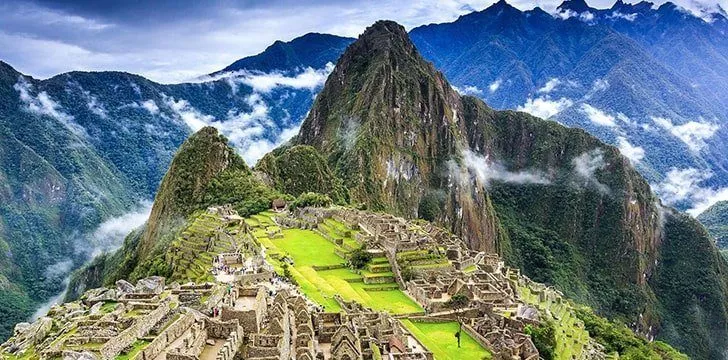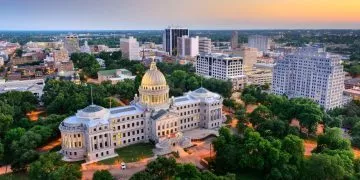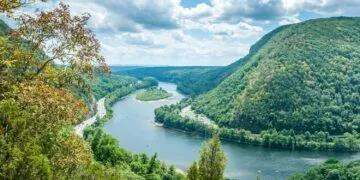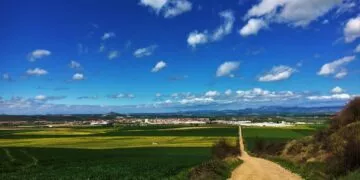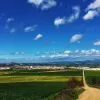Set high upon the crest of a mountain ridge above Peru’s Sacred Valley lies the fabled 15th Century Inca citadel Machu Picchu.
A site that bestows wonder upon all who make the journey to its soaring heights, this marvel of Inca architecture is one of the greatest archaeological discoveries of the 20th Century.
Despite it being the most preserved archaeological site of the Inca Empire, there are no records of the purposes of Machu Picchu, due to the Inca language being only spoken, not written.
As a result of this lack of knowledge, there have been many wild theories when it comes to Machu Picchu, which is a large reason why it draws so much intrigue.
So, what do we really know about Machu Picchu? Let’s take a look at the cold, hard facts.
The name “Machu Picchu” means “Old Mountain”.
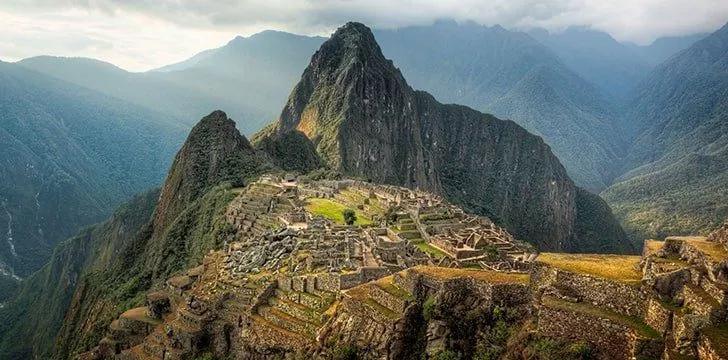
The Machu Picchu archaeological site lies in a saddle between the peaks of Machu Picchu (the mountain) and Huayna Picchu.
Although confusing at first, the naming of the site after the mountain it rests beside actually makes more sense than you’d expect.
In the official language of the Inca Empire, Quechua, Machu Picchu translates into “Old Peak” or “Old Mountain”.
This makes you wonder whether it was originally called this, or whether its name was lost over the ages and replaced with the nearest geological landmark.
Hiram Bingham did not discover Machu Picchu.
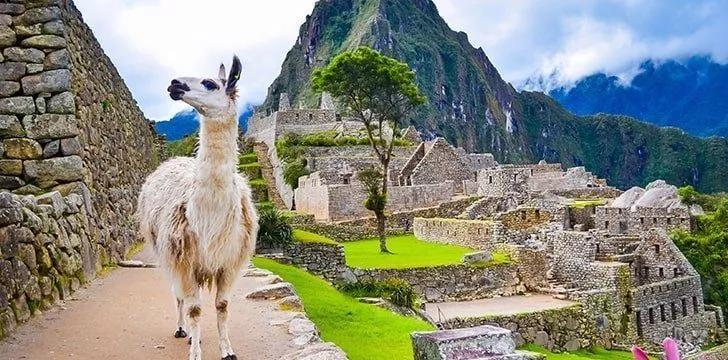
When Hiram Bingham stumbled upon the ruins of Machu Picchu in 1911, he was quick to share his discovery with the Western world.
A lesser-known fact, though, is that he was actually led there by a Peruvian guide by the name of Melchor Arteaga.
In fact, Machu Picchu was never really lost. This is a common misconception largely due to it never being reached by Spanish Conquistadors in their invasion of Peru in the 16th Century.
While the local indigenous people were well aware of its existence, the Spaniards never managed to even come close, which is something that we should all be thankful for today.
If they had, it’s safe to say that there wouldn’t be much left to marvel at anymore.
Augusto Berns was most likely the first Westerner to reach Machu Picchu.
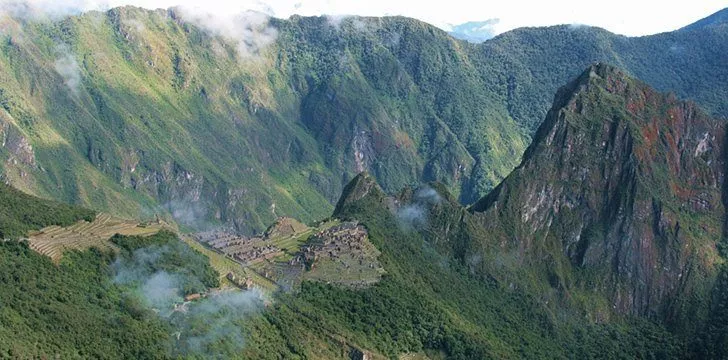
Not only was Machu Picchu never lost, but it’s also possible that Bingham wasn’t even the first Westerner to set eyes upon it.
It has been long claimed by various scholars that the German adventurer and businessman Augusto Berns reached Machu Picchu and plundered it 44 years previously, in 1867.
There are even maps that show reference to the ruins as early as 1874, strengthening the theory that Bingham was certainly not the first there.
No, Machu Picchu is not the “Lost City of the Incas”.
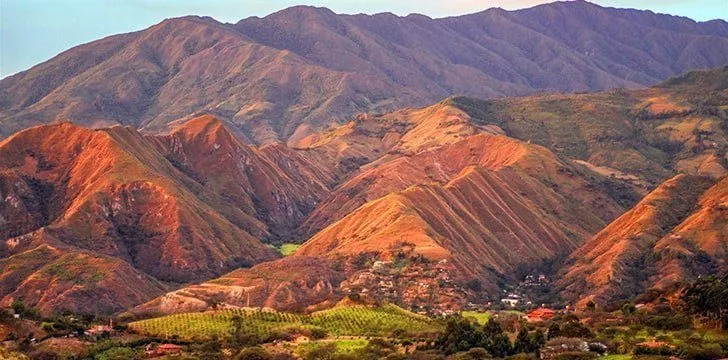
Machu Picchu wasn’t exactly what Bingham was searching for when he made his epic journey into the Andes.
When he set out, he was really in search of the “Lost City of the Incas”. Also known as the Vilcabamba, where the last rulers of the Inca Empire held out against Spanish tyranny until their demise in 1572.
After excavating the ruins of Machu Picchu Bingham made the conclusion that he had found the Lost City, and published his findings.
Although they were wildly incorrect, the did lead to worldwide interest in Machu Picchu.
This of course prompted a further thorough investigation, as well as the millions of visitors that flock to the now-famous ruins every year.
Ironically, Bingham actually stumbled upon the ruins of the lost city on his way towards Machu Picchu, but dismissed it without much thought and continued on his journey.
It wasn’t until 1964 that Gene Savoy identified the ruins as Vilcabamba, which is widely accepted among scholars, historians, and archaeologists as true.
Was Machu Picchu a temple full of virgins? Not really, no.
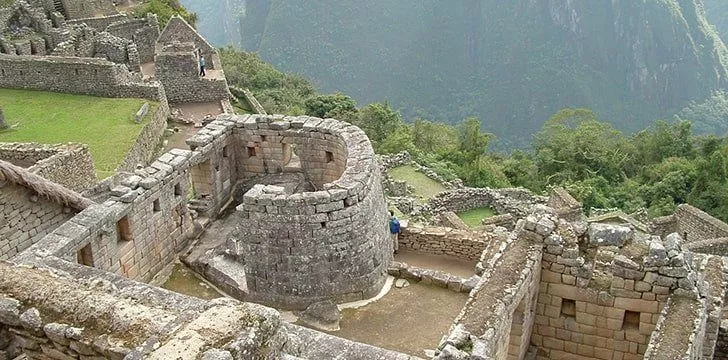
After Bingham returned to Machu Picchu in 1912 and started excavating the site, he made the suggestion that it was used as a sanctuary for Virgins of the Sun, of the Inca religion.
At the time of the Spanish invasion, there were several thousand of these virgins, otherwise known as Chosen Ones, who were kept in temple-like convents.
Bingham made this suggestion as more than 75% of the first few dozen skeletons unearthed were primarily identified as female.
This theory has long been debunked, with the majority of skeletons actually being male, rather than female.
Machu Picchu wasn’t used for human sacrifices.
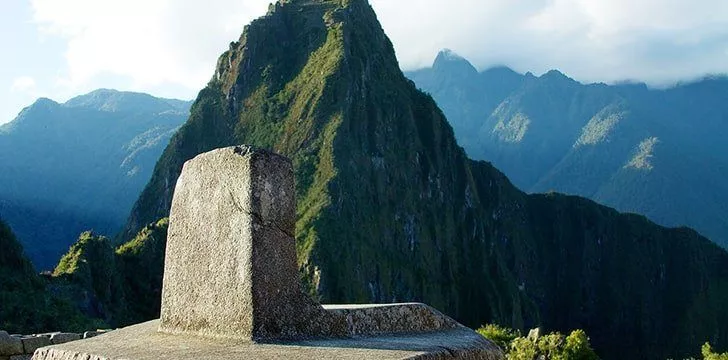
There are many myths and legends of Machu Picchu being used as a site for human sacrifice, yet very little scientific evidence backs this fact up.
It’s no small surprise though, as the fabled mountain citadel was originally thought to be a sanctuary for the Chosen Women, who among other duties often ended up as human sacrifices.
This theory was debunked of course, but there are plenty of other locations within the Inca Empire where such things did occur.
It was most likely a palace for the rulers of the Inca Empire
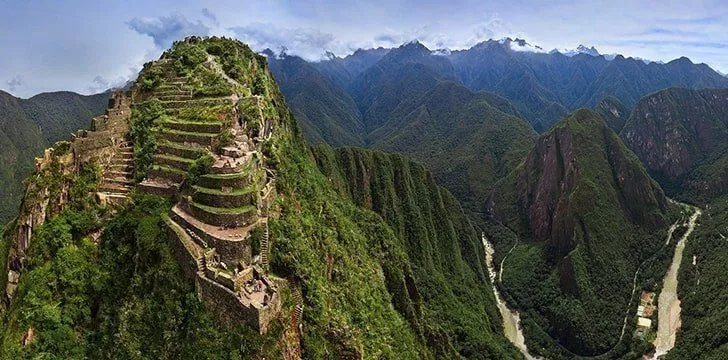
Since its rediscovery, there has been a range of theories as to the purpose of Machu Picchu.
Some have claimed it was a mountaintop fortress, the last bastion of the Inca warlords, while others believe it was a university and place of scholarship.
Based on all available evidence and the style in which Machu Picchu was constructed there is just one theory that is believed to be most likely.
This theory states that it was a palace for the then ruler of the Inca Empire, Pachacuti Inca Yupanqui, who reigned from 1438 to 1471.
Machu Picchu is made up of nearly 200 buildings.
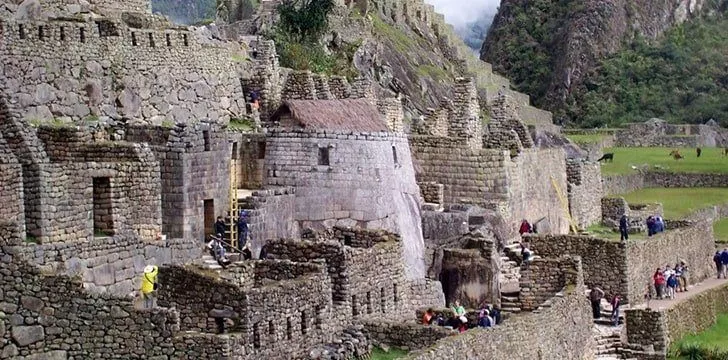
Set over a 5 mile stretch of land, Machu Picchu has nearly 200 known buildings, with more being uncovered regularly in further excavation works.
Ranging from temples to plazas, to residential buildings and baths, what little there is left to set eyes upon is still a marvel to behold.
Of all the structures unearthed and identified to date, the most impressive and of seemingly greatest importance, as well as being the most fabled is the Temple of the Sun.
The temple, otherwise known as Sacred Rock was used as a site for paying tribute and giving offerings to the sun, from what little we can gather.
The construction of the Temple of the Sun is one of the most impressive forms of architecture and masonry found on the site.
An example where this is most visible is at the base of the temple, where the cut stone walls fuse with a natural stone grotto.
The workmanship here is so natural in appearance it takes a second investigation to realize it was man-made.
Machu Picchu was a hand-made wonder.
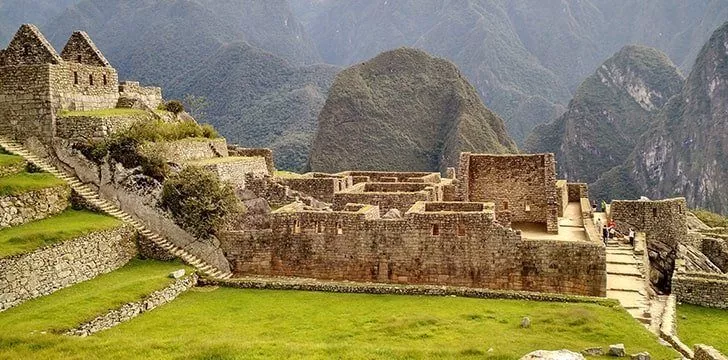
Most of the stones shifted to the site of Machu Picchu weighed in excess of 50 pounds (22 kg).
While this may not seem much at first, you’ve got to remember that these would have been transported up winding narrow mountain paths.
The true marvel here is not that they managed to do this though, it’s how they achieved this impressive feat of new-world engineering.
Some ancient civilizations, such as the Ancient Egyptians, were known for their ability to shift vast quantities of stone and craft it into structures so impressive that they seem almost humanly impossible.
While the Inca created similarly impressive structures and monuments, being a new-world civilization, they actually had very low levels of technology.
Unlike the Ancient Egyptians, the Incas didn’t even have the know-how to create iron, nor had they invented the wheel.
There are more than 3,000 steps in Machu Picchu.
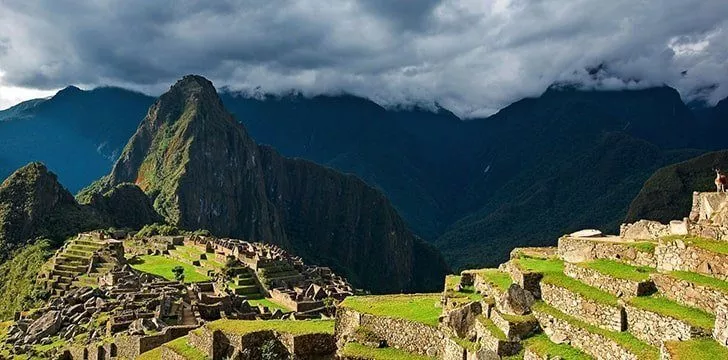
Hiking the Inca Trail to Machu Picchu is not for the faint of heart.
You have to traverse elevations ranging from 8,530 to 13,780 feet (2,600 – 4200 meters), ascend, and descend multiple thousand hand-cut stones before you even come within sight of the ruins.
Once you’re there though, it doesn’t get much easier on your legs.
Throughout the winding streets, pathways, plazas, and walkways of the archaeological site, there are more than 3,000 steps!
Machu Picchu lies at the intersection of two fault lines.
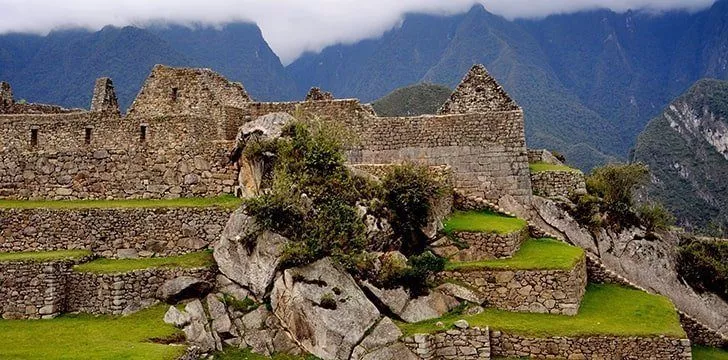
A possible explanation as to how the Inca people managed to shift so much stone and break it to construct Machu Picchu and other similar mountaintop citadels lies in the geography of the area.
After investigating these citadels and the surrounding area for more than 10 years, Dr. Rualdo Menegat presented his findings to the Geological Society of America conference in Arizona.
He concluded that Machu Picchu and a number of major cities nearby were located on or near fault lines and that the Inca Empire had chosen these locations for very specific reasons.
The Incas most likely weren’t choosing these sites due to their position on fault lines though.
Menegat’s findings indicated that they instead developed a tendency to build in such areas due to the presence of already fractured rocks and increased soil drainage, phenomena consistent along fault lines.
This abundance of broken stones allowed the Inca to create their citadels without having to build quarries or shift stones from elsewhere.
Machu Picchu is earthquake-proof.
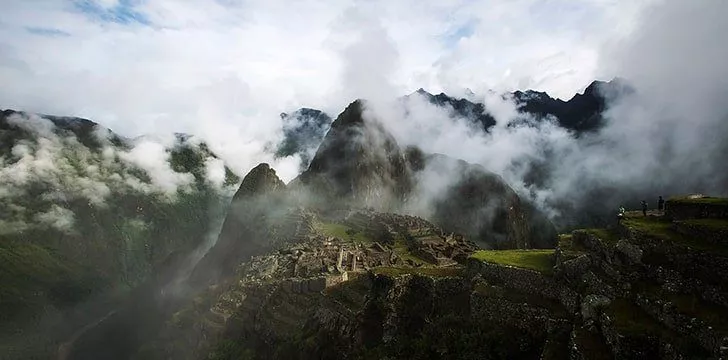
Despite lying at the intersection of a number of fault lines, this ancient citadel is actually resistant to earthquakes.
A true testament to the incredible masonry skills of the Inca people, this resistance is due to the application of a building technique called Ashlar.
Unlike traditional building methods, Ashlar does not use mortar of any sort, instead of using stone blocks that are cut to such extreme precision that they fit together in a remarkably similar fashion to Lego.
The stones are so tight-fitting that it is actually impossible to fit even a knife blade in between them!
At the top of Machu Picchu lies an astronomical observatory.
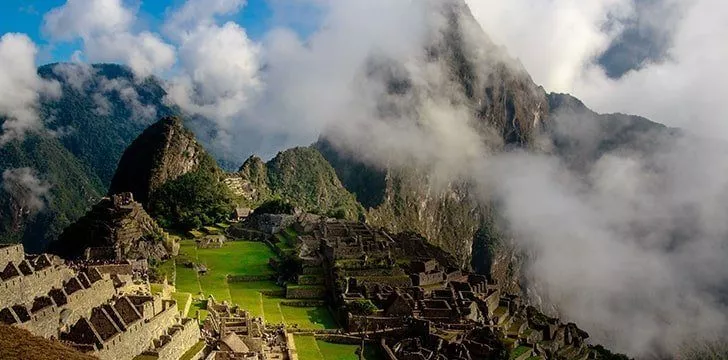
Don’t be fooled though, you won’t find giant satellites or telescopes here.
Instead, you’ll find Intihuatana, or Hitching Post of the Sun, a ceremonial sundial near the main plaza.
Carved out of a single piece of rock into a pedestal and central pillar, Intihuatana is 6 feet (1.8 meters) high.
Unfortunately, most uses of this sacred stone have been lost to the sands of time.
What we do know is that it accurately indicates the two equinoxes and could be used to predict eclipses, as well as times to reap and sow crops.
Without food from the surrounding valleys, the residents of Machu Picchu would have starved.
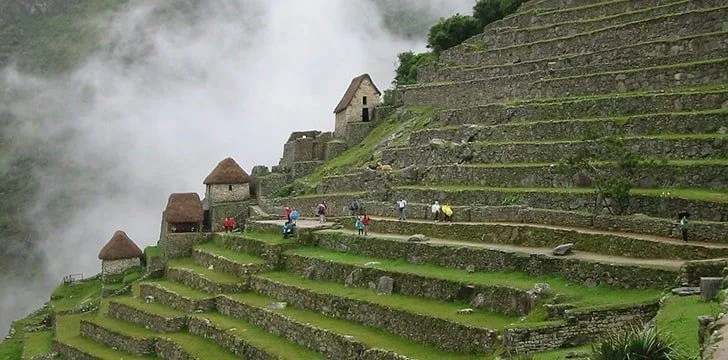
Machu Picchu had over 600 terraces, and while most were in place to prevent the city from sliding off the mountain top and down into the valley, others were used for agricultural purposes.
The conditions were perfect, and although crops here flourished, it was impossible to sustain the sheer population of the site of such a small amount of arable land.
These terraces were constructed so well that centuries after the collapse of the Inca Empire some were still being used to grow crops by local people when Bingham arrived.
You don’t have to hike to reach Machu Picchu.
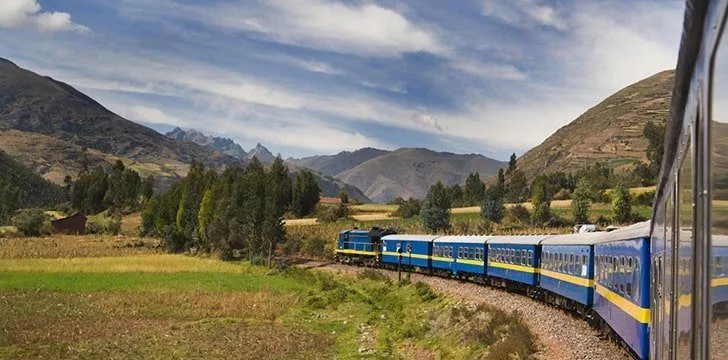
Yep, you heard that right. For better or worse, Machu Picchu is more accessible than ever.
Should you be inclined you can take a train ride from Cusco, the capital of Peru, to Aguas Calientes, a small town that rests in the valley below Machu Picchu.
Positioned right on the Urubamba River, this quaint town is the last stopping point before the journey to the peak.
At Aguas Calientes, you are faced with two options: the easy way or the hard way.
The hard way means a grueling 90-minute hike up countless stairs which leaves you winded before you even enter the archaeological site.
The easy way is simply to jump on board a bus which weaves its way slowly up the mountain, allowing you to relax and take in the views on your way.
It’s easy to see why Machu Picchu quickly rose to fame and became a popular destination for travelers from all corners of the world.
The vast majority of Machu Picchu’s history is shrouded in the mists of time, and will most likely stay that way forever due to the lack of evidence and written records.
For some, this lack of knowledge and mystery makes this ruined citadel a major attraction, allowing them to wander through long forgotten and crumbling streets, letting their imagination run wild.
Others may come to marvel in the ingenuity of the Inca Empire, to gaze in awe at the flawless architecture and incredible workmanship that is still so very present in the ruins.
For those with a penchant for history, it’s to walk in the footsteps of the Incas and get a taste of what life may have been like for this fascinating civilization before it was crushed by the Spanish invaders.
There’s really something for everyone at Machu Picchu, and all I can say is go. Make the Journey, I’m sure you won’t regret it!
